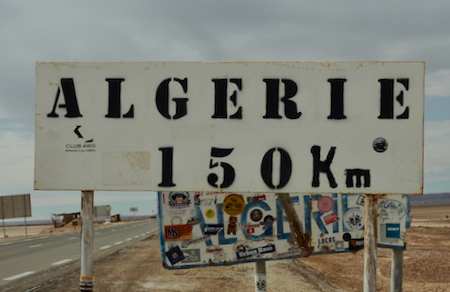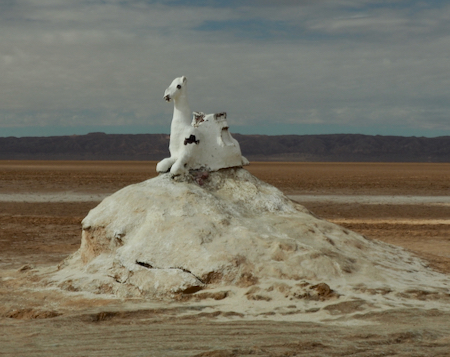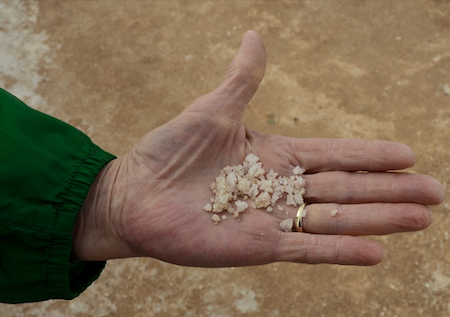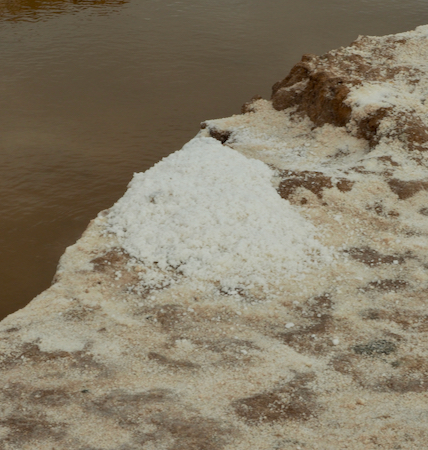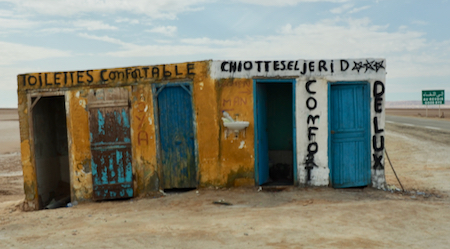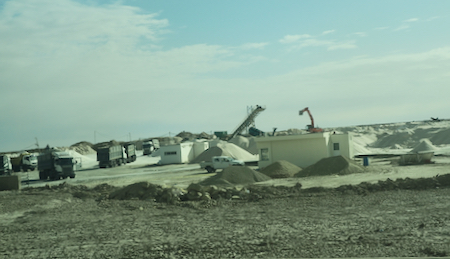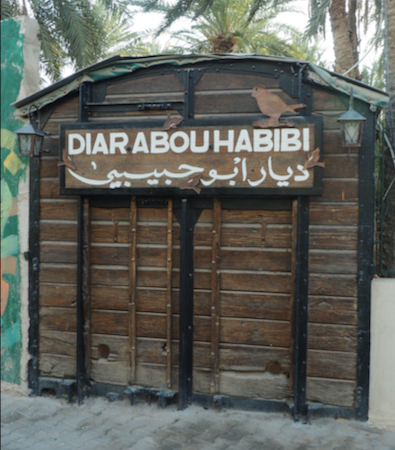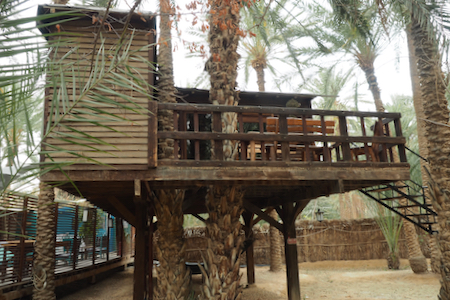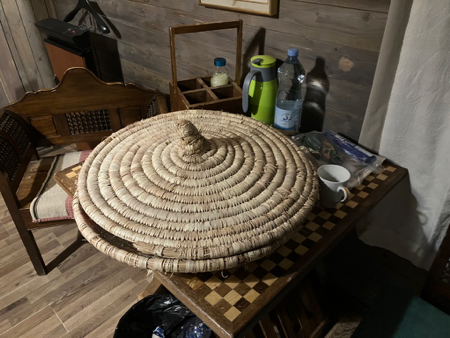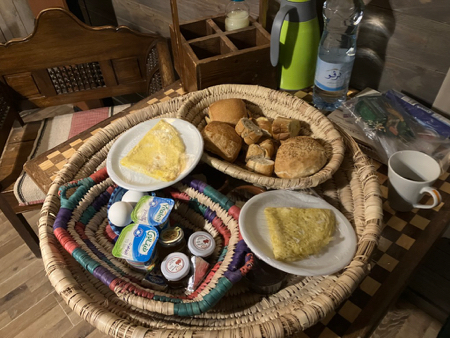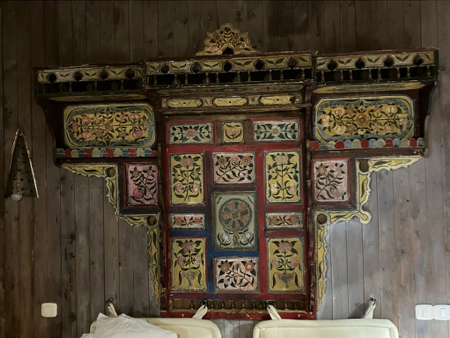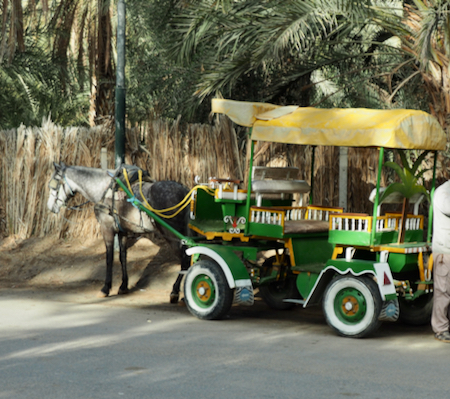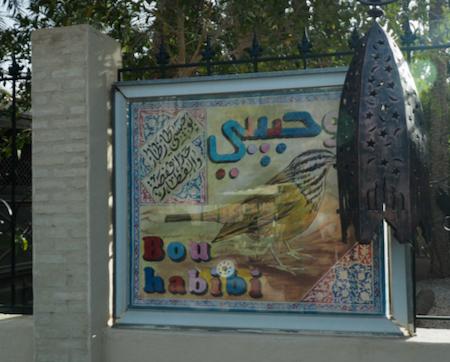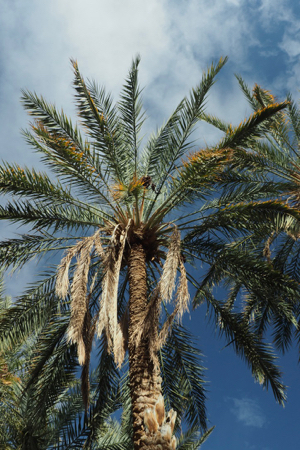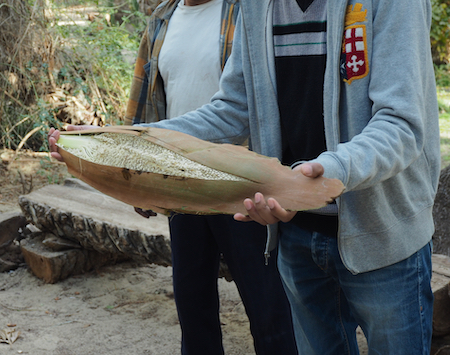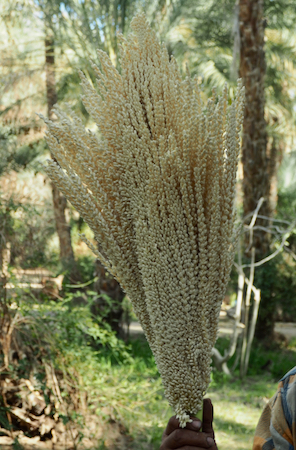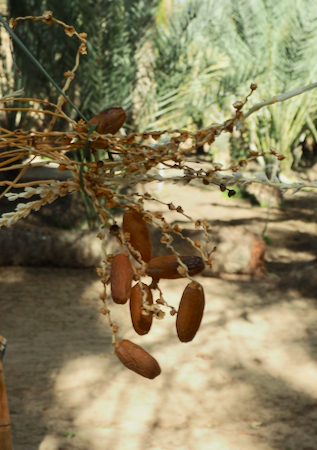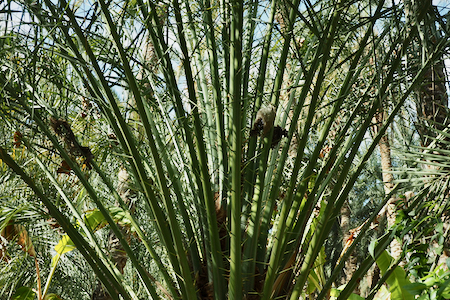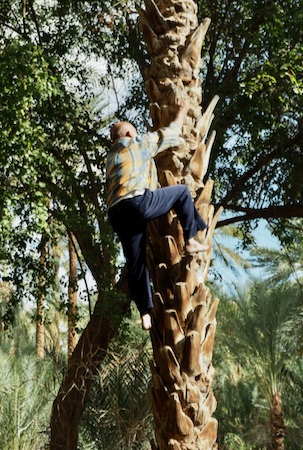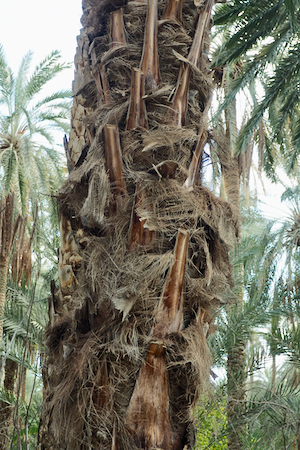Mon., 2/27/23 - Morning in the Sahara, Camel Riding Drive to Tozeur
We got up to see the sunrise in the Sahara. I got a cup of coffee and walked up to the top of the big dune. We wore all the layers of clothing we had with us and were quite comfortable. I think it was around 50°F. The sun came up above the dust/smog around 7 AM. Then we had breakfast at the camp dining area. Marge had an omelet cooked for her. The bread was like large English muffins, the cheese was like Happy Bull soft cheese and everything was very good.
Rising sun
Tracks in the sand
Local bird greeting the day
Dunes and plants
Dunes and plants
Dunes and plants
Dunes and plants
Dunes and plants
Footprints in the sand
Our land rovers drove us back over the dunes at 8:30. We had a brief rest stop and drove some more. Mohammed stopped for us to talk with a young man with a herd of 60 camels. He and his brothers take turns wandering with the camels away from home for 3 months at a time. They raise camels and sell off the extras.
We arrived in the middle of nowhere for our 45 minute camel ride. Four camels to one lead walker was too many. My camel was tethered to one lead by the camel man and he had another two tethered together in his other hand so the four animals kept bumping into each other and into our legs. The pillows were behind the hump and the handle bar in front which was a stretch for me but the ride was almost comfortable even without stirrups.
This fence lost the battle with the sand
Ready to go
Gale's beast
Looks like organized chaos
Gale
Marge - you learn to hang on!
After the camel adventure, our 4x4s dropped us at a hotel where we were able to use a nice restroom, wash our hands, and enjoy a coffee.
We transferred back to our bus and drove on to Drouz. Drouz is a Saharan village of two Berber tribes. It is an oasis, which is defined as “a spring surrounded by sand dunes.” We ate lunch sitting under an olive tree and two date palms in the pleasant backyard of a Drouz family. Lunch was bread, soup, carrot and potato salad, and rice - strange but good - and tangerines for dessert.
On the way to Tozeur we stopped at a hot spring, Souk El Ahad, where men were bathing. The water comes out of the ground at 76°C (170°F). It is pumped up a structure to flow down and begin cooling in the air to 50°C. Then it flows in open channels to run down steps to cool to 26°C and run out to irrigate the oasis and date palms. The structure was built in 1978. (Photos were frowned upon, so there aren't any.)
The next stop was to photograph what are called the “Heart of the Dunes.” These are the hardened remains after the sand has been compacted and the loose sand blown away.The final stop was at Chott El Djerid, a (mostly) dry salt lake that has created the largest salt pan in the country. Salt is mined (collected) from the salt beds and exported to the EU to use on snow covered roads, not for eating.
In the area around the “Heart of the Dunes”
Road sign
Chott El Djerid - Rock salt camel
Rock salt
Rock salt
Needless to say, no one used these facilities!
Mining the rock salt
At the end of this very long day, we finally arrived in Tozeur and got into our cabins at Diar Abou Habibi at 5 PM instead of 3.
Tozeur was built by the Romans around 1,000 CE and was taken over by the Arabs in 660. Tozeur is considered the capital of Southern Tunisia. It is renowned for its production of dates and its decorative brick houses. In 2005 the governorate declared all houses/buildings must have at least 25% of the façade made with bricks set in patterns.
Our "cabin"
The day was spent in the oasis of Tozeur. A short ride in horse carriages took us to visit a working date farm. The farm is owned by a rich man living in Switzerland and is managed by a local man who has worked there for 37 years. He explained the operation to us.
Travelers across north Africa hundreds of years ago spit out date seeds they had eaten as they travelled. This became the source of many of the varieties grown in the area today. Also, it was realized that climate and soil conditions in this area near the salt flats are especially good for growing dates. 120 of the 250 species of dates grown world-wide are to be found growing in Tozeur.
Palms are actually giant grasses. They do not develop tree rings but rather have fibers growing the length of the trunk. Because of these fibers, palms make good lumber. A trunk is cut in half lengthwise and soaked in salt water which preserves it and makes it bug proof. Our cabins are constructed from palm trunks. We have seen how useful the branches are for roofs, fencing, burning in stoves and kilns, etc.
There are male trees - with the leaves/fronds growing straight up - that produce pollen in the center upshoot. There are female date palms whose leaves drape downward and will produce the dates. On date farms, the female clusters are pollinated manually to give the best yield. Our host showed us how he climbs the male tree with bare feet and cuts the stem containing the pollen. Then he climbs the female tree and secures a piece of the pollen sprout in the female cluster to assure pollination. If dates have not been pollinated, they will not produce a seed and will be so bitter not even animals will eat them. On this farm, they plant fig and banana trees in the shade below the palms. They can also plant vegetables between trees for the family’s use.
Breakfast arrived in this nice basket
Almost more than one can eat
Headboard above the bed
Transportation to the date farm
Hotel sign
Date palms
Date farm
Date palm
Seed pod from the date palm
Date palm seeds
Dates
Our older host climbing the date palm
This is what he was climbing barefooted
| Return to Top | Return to Itinerary | Return to Trips page to view other trips | Return to Dreamcatcher Home Page |
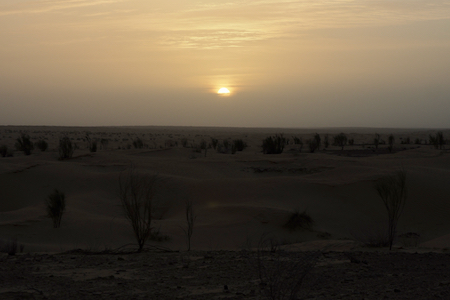

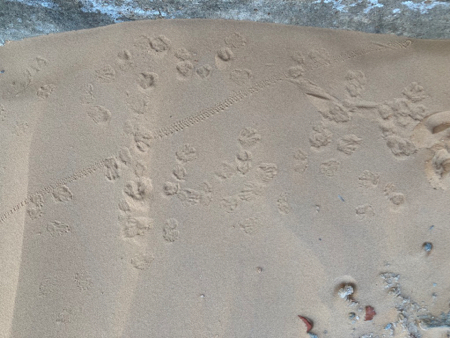
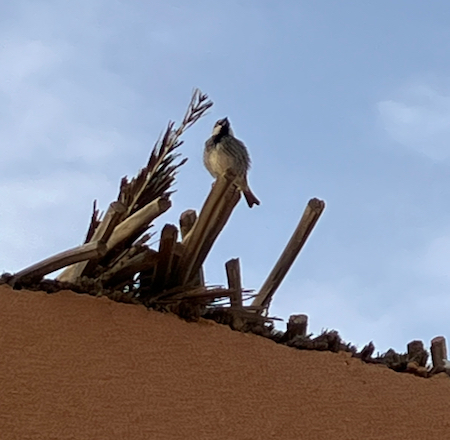

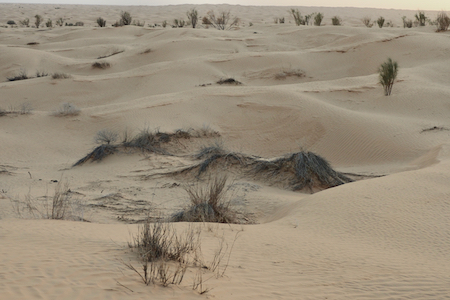

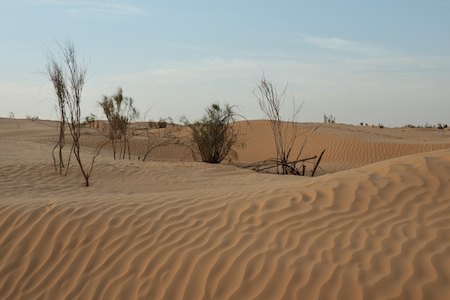
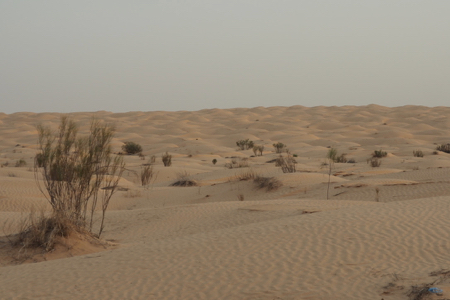
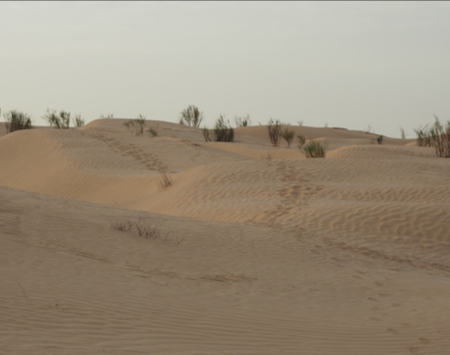
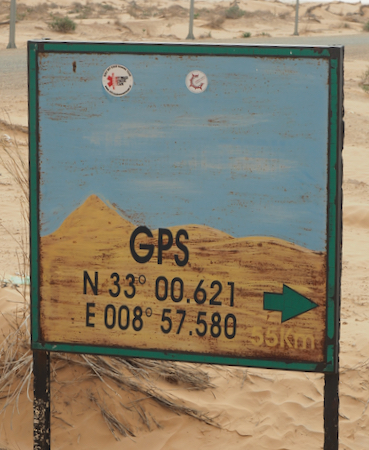
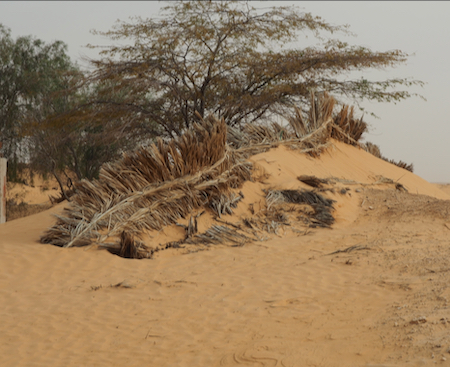
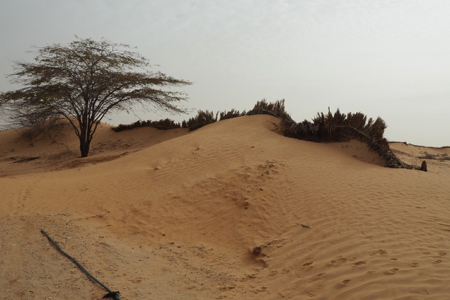
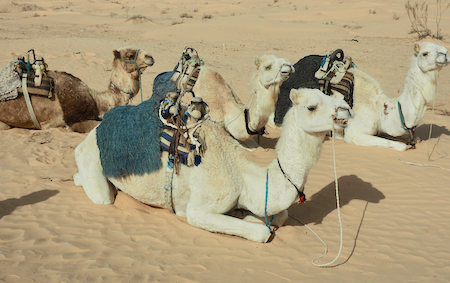
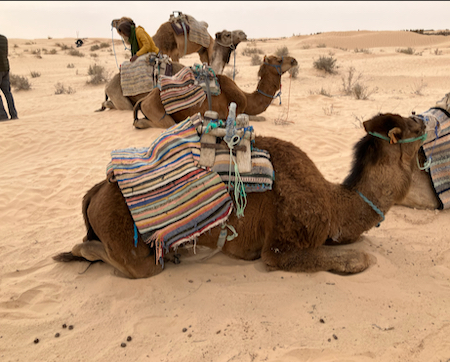
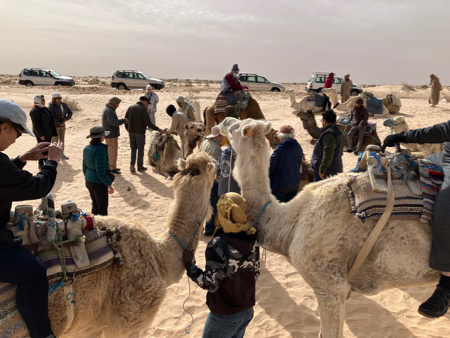
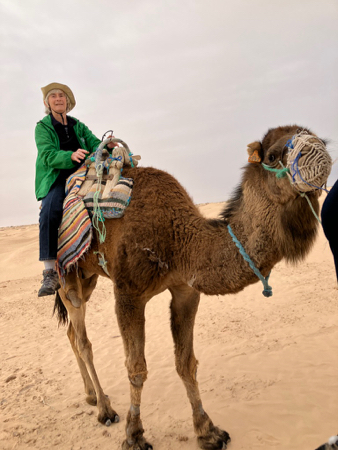

 Camels grazing on something
Camels grazing on something
